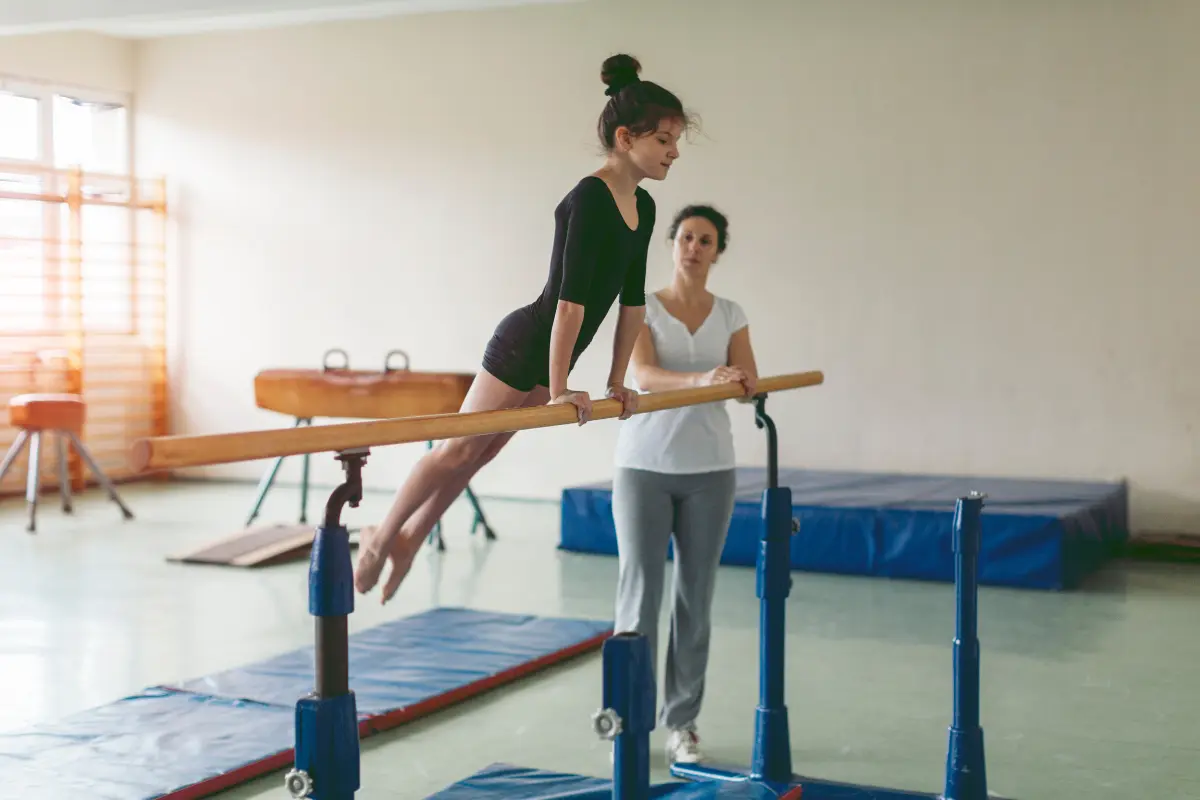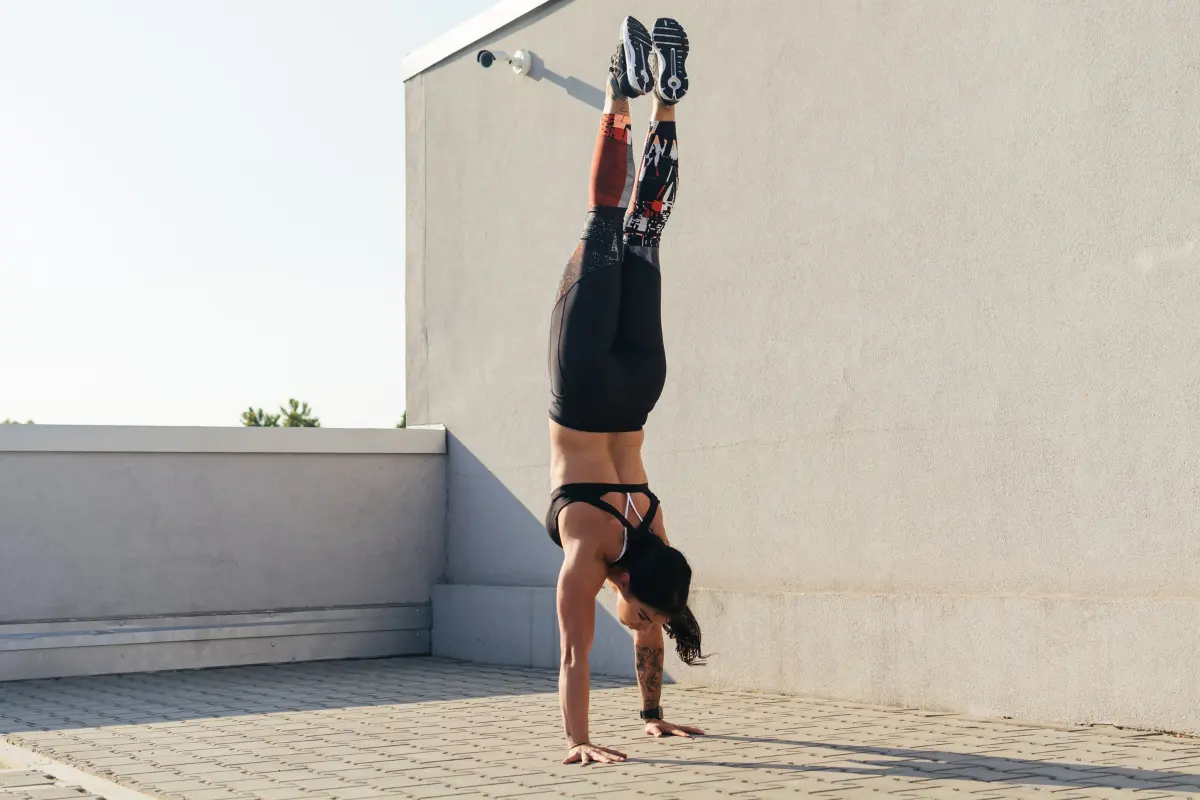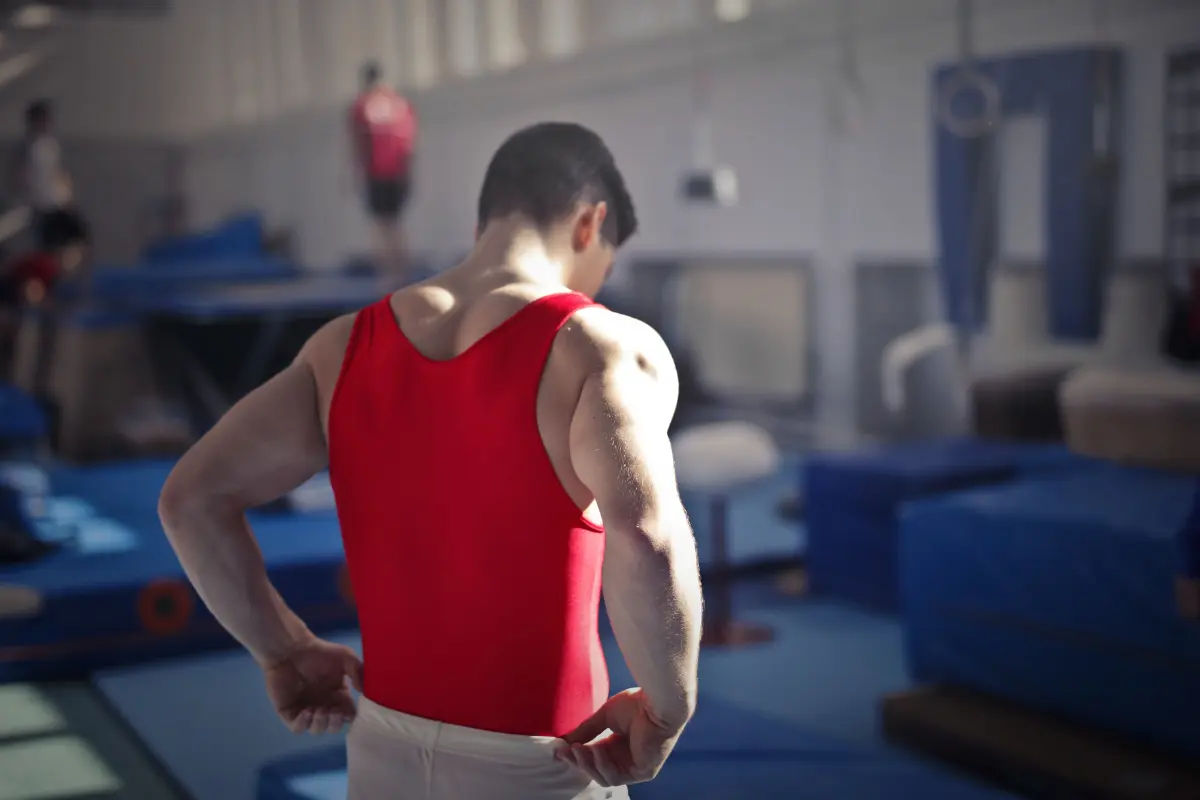The beach is the ultimate open-air gym. With the soft sand supporting your landings, the ocean breeze keeping you cool, and an endless sky to flip into, there’s no better place to combine gymnastics and summer vibes.
Whether you’re a beginner with a love for movement or a seasoned gymnast looking to spice up your practice, these 10 beach-friendly moves will keep your skills sharp and make for some seriously epic videos.
1. The Classic Cartwheel (Beach Babe Edition)
The cartwheel is a go-to gymnastics move—and it looks even better on the beach. The sand adds a bit of challenge for your balance, but also makes it softer on your hands and feet.
How to Do It:
Start in a lunge with your arms up. Kick over with long, pointed legs and imagine drawing a half-circle in the air with your feet. Want a challenge? Do a line of cartwheels with no stops in between!
Vibe Check:
Sun behind you, legs stretched out, arms slicing through the breeze—you’re the main character, no doubt.
2. Front Walkover Into the Waves
A front walkover already looks graceful, but doing it on sand takes it to another level. The soft surface makes backbending smoother and less scary.
Tips:
Start with a strong backbend by pushing your hips forward. Kick one leg up, then let the other follow in a split. Finish with a big lunge and arms up like you meant to be that cool. Try walking into shallow water for extra drama.
3. Back Handspring in the Sand (Advanced)
Doing a back handspring on sand is no joke—it’s harder, but also builds serious power. The sand absorbs your jump, so you’ll need more push and control.
How to Nail It:
Bend your knees, swing your arms back, and jump strong. Keep your core tight and hands firm in the sand. Start on firmer sand near the water. And please—only try this if you’re already good at handsprings on a mat.
4. Aerial (No Hands, All Glory)
An aerial cartwheel is just… epic. No hands, all legs, and total freedom. It’s fast and showy, and perfect for the beach.
Tips:
Use a strong run or prep step for momentum. Keep your legs straight and eyes forward to stay on track. Sand makes it harder to take off, but that just means you’ll be stronger when you go back to the gym.
5. Handstand Photoshoot
Handstands on the beach are fun, challenging, and make great pictures. Test your balance, try new shapes, and snap a few shots while you’re upside down.
Tips:
Start in a lunge and kick up strong. Squeeze your legs and lock your arms. Try holding for 5–10 seconds and play with leg shapes—split, stag, diamond, or pike.
6. Jump Split or Straddle Jump
These jumps look amazing in the air. Sand makes jumping tougher, so they also help build strength and height.
How to Jump Higher:
Swing your arms to help lift your body. Hit your highest point before you split your legs. Land softly with bent knees. Want cool photos? Use burst mode while you jump!
7. Backbend Kickover
A great move if you’re working on back flexibility and control. The sand helps your hands stay in place, which can make kickovers easier.
How-To:
Start in a bridge with hips up and arms straight. Shift your weight to one leg and kick the other over. Finish in a lunge with arms up. This move is perfect for building confidence and looking graceful.
8. Switch Leap Over a Sandcastle (or Friend!)
Turn it into a game! Build a sandcastle or have a friend crouch low, then leap over with a split or switch leap. It’s fun and looks super cool in action.
Tips:
Kick the front leg first, then switch in the air. Keep your hips straight and land strong. Just make sure your “obstacle” is safe and willing!
9. Headstand or Forearm Stand Poses
Want to slow things down? Try a headstand or forearm stand. These are all about balance, strength, and focus—and they look amazing in photos.
How-To:
Make a little mound of sand for support. Keep your core tight so you don’t wobble. Try fun shapes with your legs—like splits, circles, or yoga-style poses.
10. Tumbling Passes Down the Shoreline
If you know a few moves, link them together for a tumbling pass along the beach. Roundoffs, aerials, or walkovers look awesome flowing into each other.
Ideas:
- Roundoff → Back Handspring
- Aerial → Roundoff
- Front Walkover → Cartwheel → Back Walkover
Tips:
Use firm sand near the water for more control. Stay light on your feet so you don’t sink. Want a cool video? Film from the side for full-motion shots.
Is It Safe to Do Gymnastics on the Beach? (Here’s What You Need to Know)
Before you cartwheel into the sunset, let’s talk about the real benefits, the actual challenges, and how to train safely and smartly on the sand.
Benefits of Beach Gymnastics
Softer Landings: The sand is soft, so landing on it doesn’t hurt as much. It helps protect your knees, ankles, and other joints when you jump or flip.
Builds Strength and Balance: Because sand moves under your feet and hands, your muscles have to work harder to stay steady. This makes you stronger and helps with balance.
Better Body Awareness: On sand, you pay more attention to how your body moves. You learn to control your arms, legs, and core better, which helps your skills overall.
Beautiful and Fun Setting: Training at the beach feels fresh and exciting. The ocean, the breeze, and the open space make workouts feel less like work—and more like play!
Challenges of Beach Gymnastics
Uneven Ground: Sand isn’t always flat. There might be bumps, holes, or hidden shells, which can make you trip or twist an ankle. Always check your area first.
No Bounce: Sand doesn’t give you a bounce like a spring floor. You’ll need more power to do jumps and flips, and it might feel harder at first.
Gets Tiring Fast: Moving in sand takes more energy. You can get tired more quickly, especially on hot days. It’s easy to overdo it without realizing.
Weather Problems: Hot sun, wind, or flying sand can get in your eyes or make your hands slippery. It’s harder to train when the weather gets in the way.
How to Train Safely on the Beach
Training on the beach can be an amazing way to stay fit and have fun—but it’s important to stay safe while you’re flipping, jumping, or stretching in the sand.
- Warm Up First: Before you start, move around to get your body ready. You can jog, do jumping jacks, or swing your arms and legs. This helps prevent injuries and gets your muscles warm.
- Choose a Safe Spot: Find a flat area with firm sand. Make sure there are no sharp rocks, shells, or holes. Stay away from crowded places so you have space to move.
- Start with Easy Moves: Try things you already know how to do, like cartwheels, handstands, or jumps. Sand makes moves harder, so it’s not the best place to try new tricks for the first time.
- Take Breaks: The sand makes your body work harder, so don’t do too much at once. Rest when you get tired and drink water often.
- Stay Safe in the Sun: Use sunscreen to protect your skin. Wear a hat or sunglasses if it’s bright. Take breaks in the shade and drink water to stay cool.
- Cool Down at the End: When you’re done, stretch your arms, legs, and back. You can also walk slowly or sit down and breathe. If it’s safe, go into the water to cool off.
Beach training is a great way to build strength and enjoy the outdoors. Just remember to take care of your body, go slow, and have fun!













